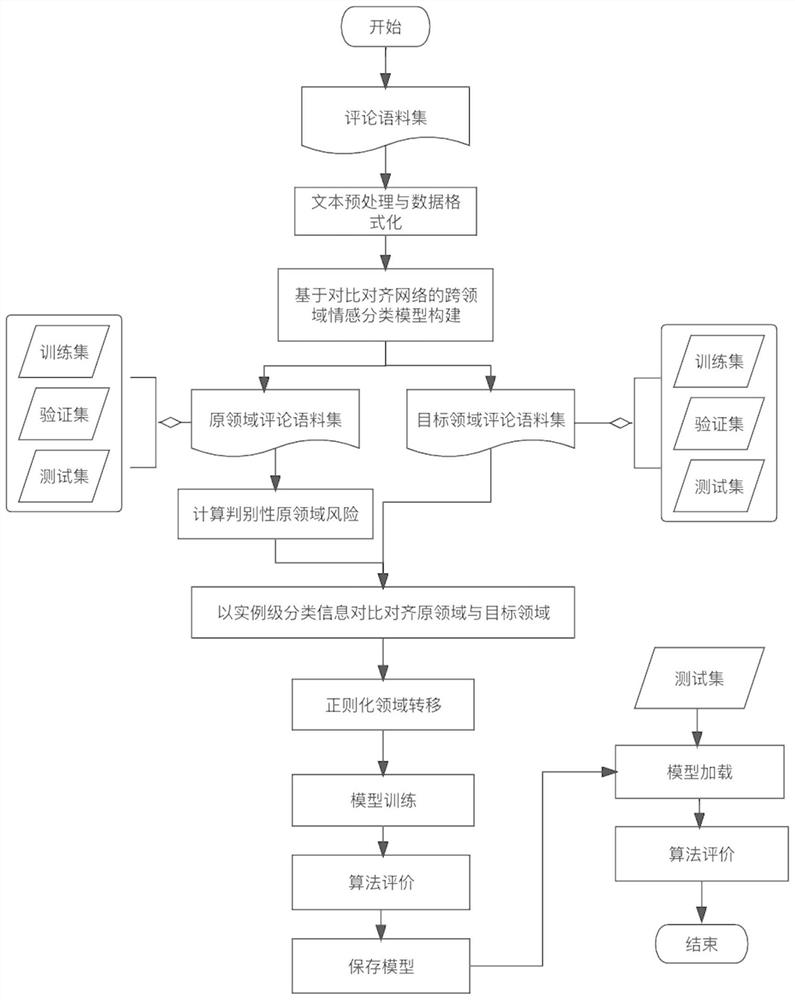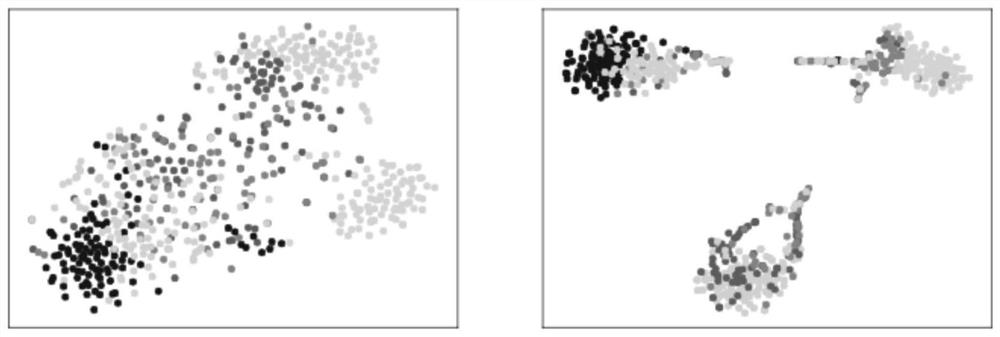Cross-domain sentiment classification method based on comparison and alignment network
A sentiment classification and cross-domain technology, applied in cross-domain sentiment analysis and cross-domain sentiment classification based on comparison and alignment network, can solve problems such as limiting the applicability of UDA and insufficient data in unmarked target fields, so as to improve user experience Effect
- Summary
- Abstract
- Description
- Claims
- Application Information
AI Technical Summary
Problems solved by technology
Method used
Image
Examples
Embodiment
[0050] like figure 1 As shown, a cross-domain sentiment classification method based on contrastive alignment network includes the following steps:
[0051] Step 1: Text preprocessing.
[0052] First, load the review corpus and pretrained language model. Among them, the pre-trained language model can be the BERT model or other models (such as the RoBERTa model).
[0053] Then, text preprocessing and text data formatting are performed on the review corpus.
[0054] Specifically, it includes the following steps:
[0055] Step 1.1: Extract attribute words, opinion words and their location information for each comment sentence.
[0056] Step 1.2: Use the nltk tokenizer to pre-segment the comment statement, and separate the token words with spaces.
[0057] Step 1.3: Add two special token words after the token sequence of the comment sentence: [CLS], [SEP], thus constructing a general input form: S={[CLS], w 1 , w 2 ..., w n , [SEP]}, n represents the total number of token w...
PUM
 Login to View More
Login to View More Abstract
Description
Claims
Application Information
 Login to View More
Login to View More - R&D
- Intellectual Property
- Life Sciences
- Materials
- Tech Scout
- Unparalleled Data Quality
- Higher Quality Content
- 60% Fewer Hallucinations
Browse by: Latest US Patents, China's latest patents, Technical Efficacy Thesaurus, Application Domain, Technology Topic, Popular Technical Reports.
© 2025 PatSnap. All rights reserved.Legal|Privacy policy|Modern Slavery Act Transparency Statement|Sitemap|About US| Contact US: help@patsnap.com



